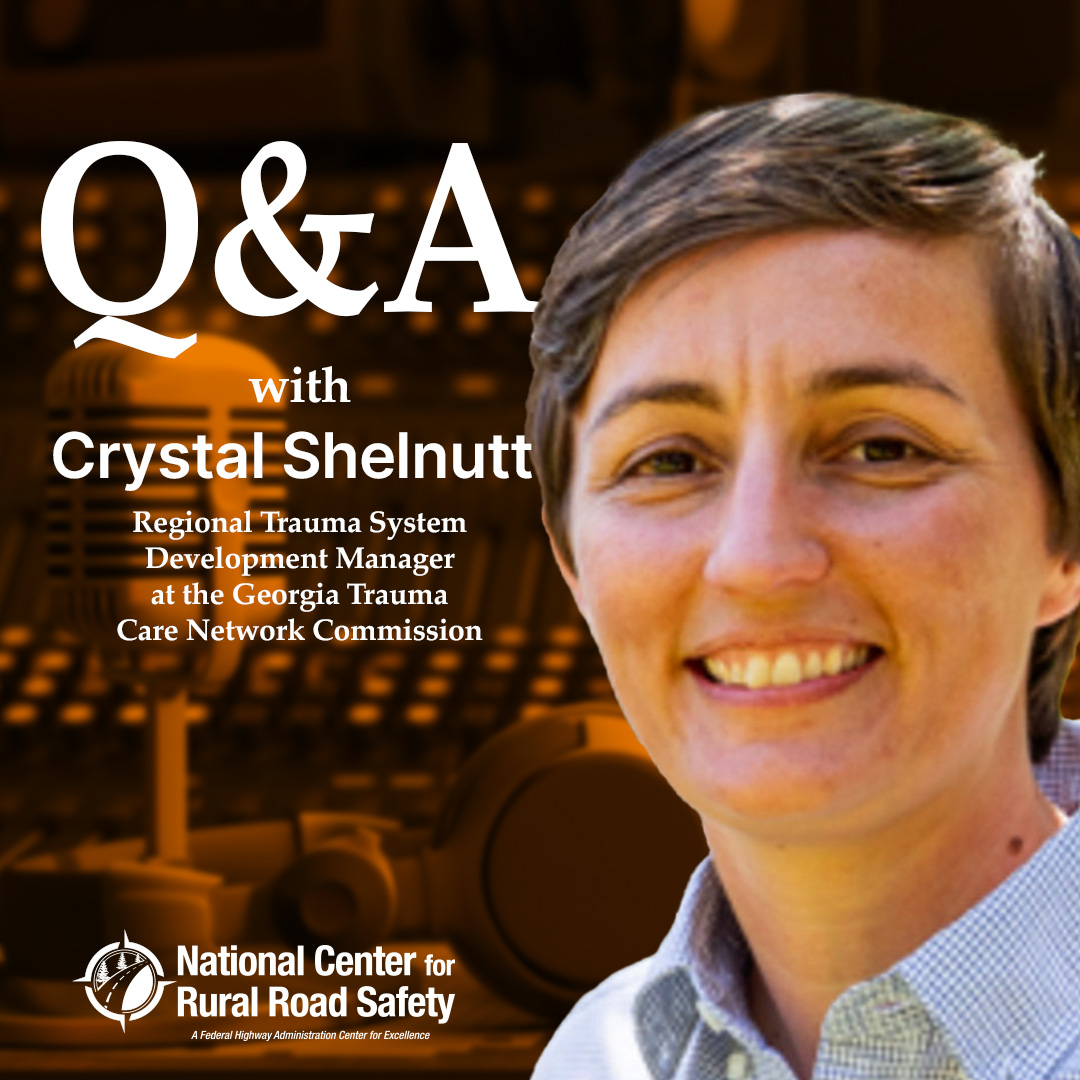Crystal Shelnutt is the Regional Trauma System Development Manager at the Georgia Trauma Care Network Commission. In this conversation, Kevin talks with Crystal about what post-crash care is, its challenges, and what the Commission is doing to advance post-crash care in Georgia. We’ve identified and summarized five prominent questions and responses from the interview.
Listen to the full episode and access resources here: https://ruralsafetycenter.org/home-safely-podcast/#shelnutt
Q: How does post-crash/pre-hospital care in rural areas differ from urban settings?
A: In rural areas, providers often face longer response times, fewer resources, and large transport distances. Sometimes there’s no hospital in the immediate community. A paramedic and partner may be the only team on scene, and fire/extrication support may be volunteer—so delays compound. Because of these constraints, rural EMS must manage high-acuity traumas early and make strategic decisions about transport, equipment, and support.
Q: What does the “golden hour” mean in trauma, and why is it critical in rural settings?
A: Trauma is a surgical disease, meaning definitive care often requires surgery. The “golden hour” refers to the idea that a patient’s chances of survival are much higher if critical treatment begins within about an hour after injury. In rural settings, delays in getting to the scene, performing extrications, and transporting to a trauma center can push patients outside that window, making early interventions by paramedics on scene even more vital.
Q: What challenges do EMS providers face in rural areas (especially around workforce and retention)?
A: The average “lifespan” of an EMS provider is only 5–7 years, due to factors like low pay (especially in volunteer services), burnout from dealing with high-stress emergencies regularly, fatigue, multiple jobs, and limited career advancement opportunities. Recruitment is hard, especially in rural areas. Many services try to fund EMT education locally, but keeping professionals long-term is a continued struggle.
Q: What can “bystanders” or local community members do to help in post-crash care in rural areas?
A: Community members can be trained in “Stop the Bleed” programs to help control hemorrhage (apply a tourniquet, wound packing) before EMS arrives. In Georgia, they’ve provided bleeding control kits to public schools (12 per school) and trained responders, and extended that to school buses and local agencies. These community-level interventions can save lives in those critical minutes before EMS arrives.
Q: What is “whole blood” in prehospital care, and why is it important (and challenging) to implement in rural EMS?
A: Whole blood refers to using blood (often low-titer O-negative) in the field for trauma patients in hemorrhagic shock. Instead of infusing saline (which doesn’t carry oxygen or clotting factors), whole blood provides oxygen-carrying capacity, clotting factors, and more physiologic resuscitation. In Georgia, using whole blood in prehospital care has shown survivability improvements of ~60% in some services.
However, it’s technically challenging to maintain temperature, comply with blood bank regulations, manage startup costs (coolers, warmers, protocols), and handle ongoing costs of blood products—all of which are significant barriers for rural EMS.
